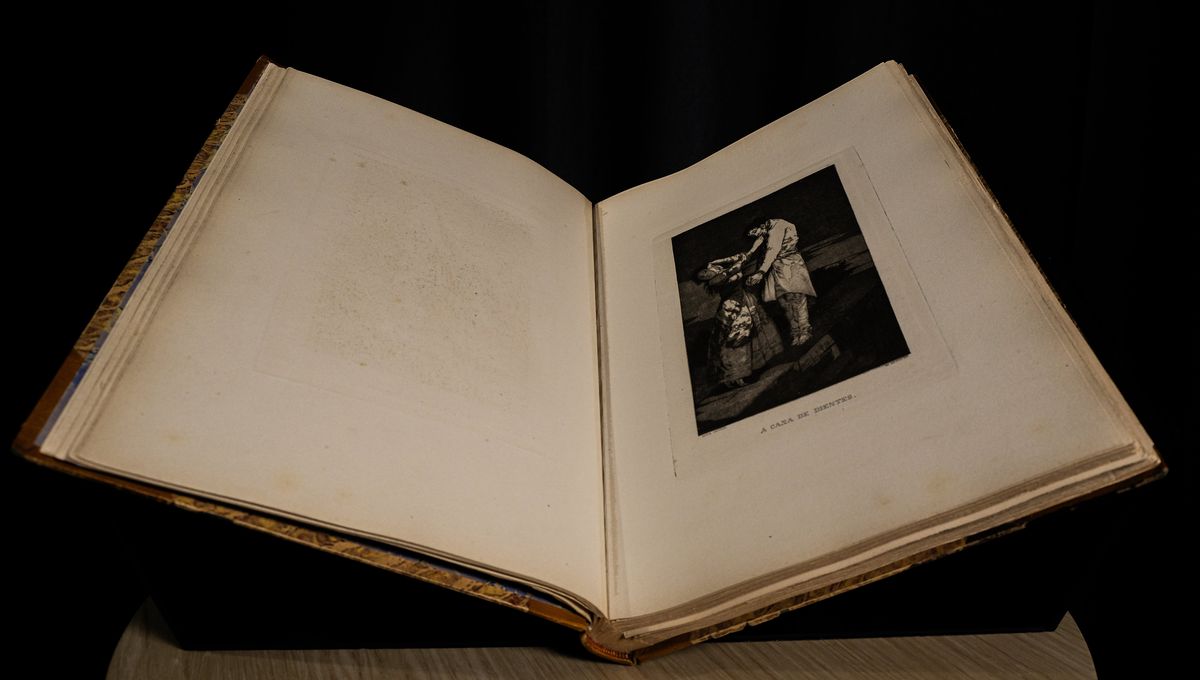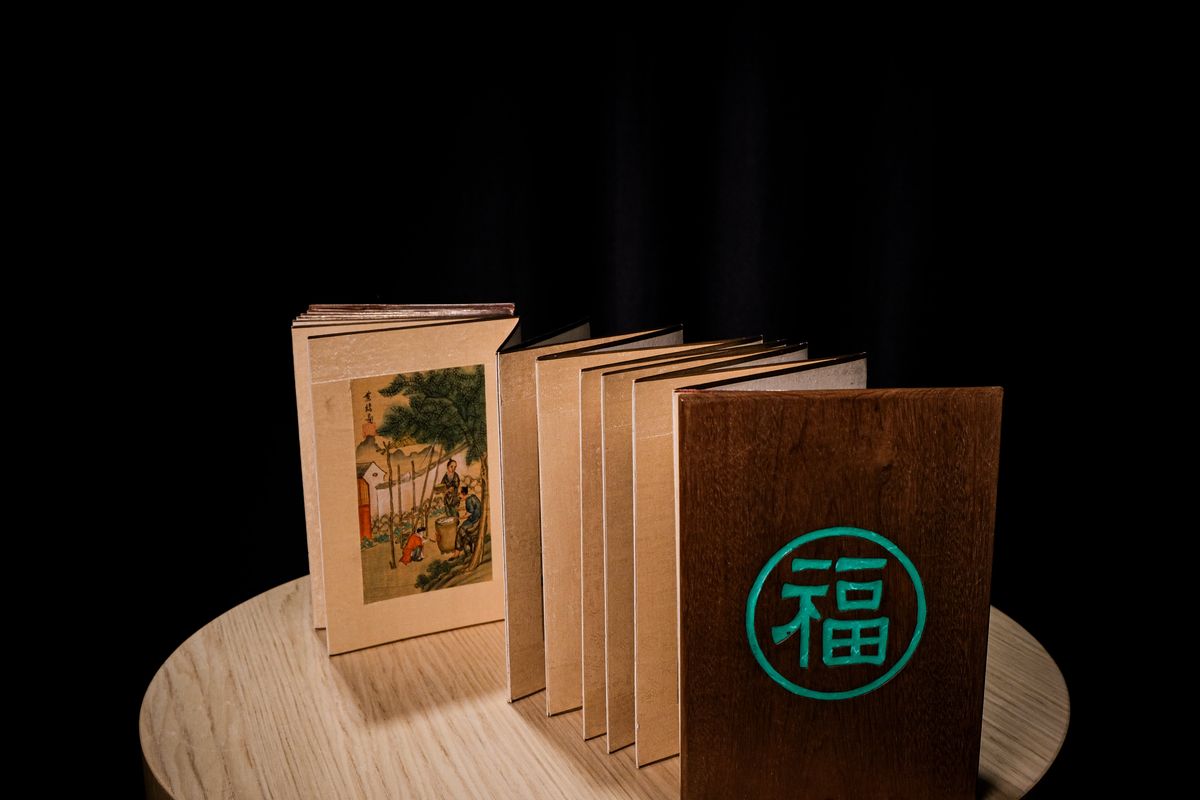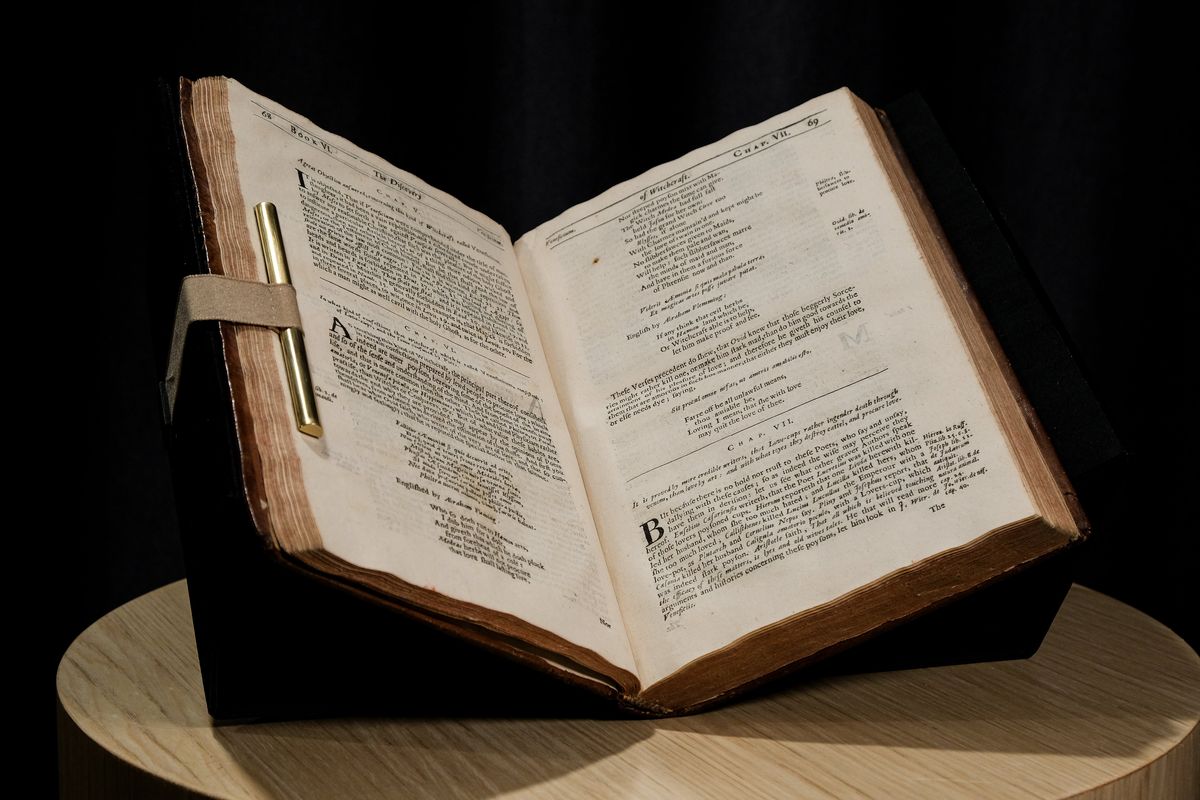‘These pieces are phenomenal’: Local poets put library’s ‘precious’ archival items at forefront in ‘From the Vault’
“The Story of Silk,” an accordion book of the early 20th century. (Courtesy of Ryan Tucker)
Readers often go to the library to look into the past, checking out books that have already been written and movies that have already been made, accessing information that’s already been shared.
But with a creative hand, those remnants of the past can lead to something new, as it has with “From the Vault: An Archival Poetry Project,” a project from Archivist and Special Collections Librarian Dana Bronson and Writing Education Specialist and author Sharma Shields, who invited local poets to create new works inspired by items in the library’s collection.
The poets will read their new work, and the archival pieces by which they were inspired will be on view Thursday at the Spokane Public Library’s Central Branch.
Shields and Bronson were inspired to create “From the Vault” after learning about a similar event held at the Brooklyn Public Library in May.
“I was inspired by the idea of the history of the archives conversing with newer stories and newer poets,” Shields said.
The event in Brooklyn focused solely on poems from the library’s collections, but Shields and Bronson wanted to broaden the scope of archival pieces to show the diversity of the Spokane Public Library’s collections.
Shields said there is something beautiful about the book as a printed object, and many of the pieces in the collections, built by George W. Fuller, the city’s librarian from 1911 to 1936, with the goal of emulating archives in Europe, are about the history of the printed book.
The pair also wanted to highlight a diverse group of local poets, reaching out to established writers, those who were newly published and those who haven’t been heavily featured in local events.
The poets were immediately interested in this project, Shields said, needing only clarity about whether the poem could be loosely based on the item or if it should be really specific to the piece.
“We really left that up to the poet,” Shields said. “We were more interested in seeing how it inspired them than in trying to constrict what they were writing. We gave people free range to respond however they want.”
Amelia Díaz Ettinger selected “Los Caprichos,” a set of 80 prints in aquatint and etching by Francisco Goya. In particular, Díaz Ettinger drew inspiration from the images “A caza de dientes (hunting for teeth)” and “Mucho hay que chupar (much to suck on).”
Asyia Gover selected Mourning Dove’s “Coyote Stories and Tales of the Okanogans.” Mourning Dove was the pen name of Christine Quintasket, an Interior Salish woman, whose novel “Cogewea” is the first known published novel by a Native American woman.
Tim Greenup chose “The Nuremberg Chronicles,” which contains 1809 woodcuts produced from 645 blocks, compiled by Hartmann Schedel. The Spokane Public Library’s edition was printed in 1493.
“I was so excited that someone chose that, because that is from the 15th century, one of the first examples of a book being developed by a printmaker,” Shields said. “It is such a gorgeous book, and I’m so excited to have it on display.”
Works by Carolyn Kizer, “The Ungrateful Garden” and “Knock Upon Silence,” caught Kate Lebo’s eye. Kizer was a poet, essayist and translator from Spokane.
“I had no knowledge of Carolyn and everything I learned was through helping Kate with the research,” Shields said. “It was wonderful for me as a writer here in Spokane to learn about this other writer who was a woman and had some ambivalent feelings about Spokane, it sounds like.”
Shann Ray focused his work on “The Drawings and Engravings of William Blake,” particularly the illustration “The Ancient of Days.” Blake was a Romantic painter and poet known for his radical works denouncing church and state.
Laura Read’s work was inspired by “The Discovery of Witchcraft” by Reginald Scot. The library’s edition of the book, which is considered the first book in English to feature detailed descriptions of magic, was published in 1655.
Shraya Singh took inspiration from two pieces from the collection: “The Bhagavad Gita,” a miniature work given to Hindu soldiers by the British government as a talisman during World War I, and “The Story of Silk,” an accordion book which features colored block prints on silk.
“I was so happy when Shraya chose ‘The Book of Silk,’ for example, because it’s an accordion book you can display all at once by just opening it up,” Shields said. “All the pages are connected to one another. It really is this beautiful work of art to even look at.”
Finally, Maya Jewell Zeller chose “The Book of the Dead,” one of the oldest items in the library’s collection. The fragments, which detail a guide to the next world, are on papyrus and are from the fourth century BCE.
“These pieces are phenomenal,” Shields said. “Some of them are the most precious archival items that are housed anywhere in the world, and we have them right here in Spokane Public Library, which is unreal.”
Shields and Bronson see “From the Vault” as a way to share the library’s extensive collection with the general public and welcome them into the collections space, not just the “privileged and few.”
Shields believes we can learn a lot about ourselves when we examine history, sometimes something as simple as, “We’re not alone.” Resiliency and the human condition too are big takeaways.
With that in mind, Shields hopes “From the Vault” becomes an annual event with new groups of poets diving into the archives for inspiration.
“I want to see where the conversation goes next time and see what inspires people next time,” she said. “I think it will always be a really fascinating conversation between our past selves as humans and our present selves as humans.”





